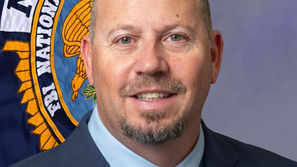Trade group: Dairies grow as stewards
- The Madera Tribune
- Jan 5, 2017
- 4 min read
Despite growing challenges, California dairies have greatly improved in environmental sustainability, using less water and producing less methane emissions than ever before, according to executive director Michael Boccadoro, of Dairy Cares.
Boccadoro summarized the trade organization’s 2016 Sustainability Report at the regular meeting of the Madera County Board of Supervisors on Tuesday. With a 2015 value of $254,996,000, milk is the third leading commodity in Madera County, according to the 2015 Madera County Crop Report.
“Farming in this state, and in particular dairy farming in this state, has become increasingly difficult,” he admitted at the start.”We did lose about 53 dairies in California in just the first six months of this year (2016) and we’re now down below 1,400 dairies statewide, and that’s down over a 1,000 in the first decade alone. So it’s a changing environment. We’re dealing with it as best we can. But it is becoming more difficult to farm in this state.”
Regardless, the dairy industry is “most proud of” more efficient production of milk, he said. According to a 2009 article in Journal of Animal Science, California dairies require 65 percent less water to produce milk now than they did in 1944.
“So it takes two-thirds less water today to produce every glass of milk here than it did 60 years ago,” he said. “I think obviously that’s a trend that’s going to continue. We’ve been doing a lot with water use efficiency.”
Progress has also been made in assisting with air quality, he said. He shared words of San Joaquin Valley air pollution control officer Seyed Sadredin, who said, “San Joaquin Valley dairy farmers have reduced smog-forming emissions from their farms by more than 28 percent over the past four years. We know more today than ever before about these emissions and how to control them, thanks to a cooperative effort of researchers, air district scientists, and support from dairy organizations.”
As for water quality, Valley dairies have implemented a Central Valley Dairy Representative Monitoring Program that analyzes 16,000 data points annually from 443 groundwater monitoring wells on 42 Valley dairies. Findings are reported and recommendations made to better protect groundwater.
“It is unprecedented and by far the most comprehensive agricultural groundwater protection program anywhere in the nation,” Boccadoro said.
Another program initiated by California dairies is the Dairy FARM Program in which dairies are evaluated based on best animal care practices developed by veterinarians. The program is verified by an independent third party.
“We’ve also taken significant steps on the renewable energy front,” Boccadoro said, “and dairies are increasingly installing solar energy systems. Just to put that in perspective, most of the dairies are putting in one megawatt of solar more.”
Use of a one megawatt photovoltaic system reduces greenhouse gas emission yearly equal to 297 passenger vehicles driven for a year or 1.5 million pounds of coal burned, according to Dairy Cares.
U.S. dairies have reduced their carbon footprint (or “hoofprint”) by 63 percent over the past 65 years, a 2009 article in the Journal of Animal Science said. The number of dairy cows in the U.S. dropped from 25.6 million in 1944 to about 9.25 million now, Dairy Cares reports, yet milk production increased about 59 percent over that time. Thus North American dairies having the world’s lowest carbon footprint per unit of milk.
Even so, California’s dairies produce 4 percent of the state’s total greenhouse gas emissions, according to the California Air Resources Board. Dairies will cooperate with state legislation to reduce that amount further by 2030, Boccadoro said.
In response to the presentation, Supervisor Tom Wheeler, District 5, said, “These people who b-tch about the methane (emitted by cattle) and all that just drive me crazy, because we had cows and animals out here way before people were here. So keep up the good work.”
Supervisor David Rogers commented, “It’s a big concern for me in District 2, because we have a large employment base in the dairy industry, very prolific taxpayers, very productive. And I’m concerned about the future of the dairy industry in our region. Actually, do you think the state will require a methane capturing program?”
Boccadoro replied, “Cleary to achieve a 40 percent reduction, it’s voluntary in the short term through 2024. We’ll have to have additional methane capture. We’re looking not just at digesters for that purpose, where we’re covering lagoon or buildings still with steel tank digesters. We’re also be looking at other alternatives: converting some dairies to scrape systems, which can reduce methane as well as increase solid separation from manure going into a lagoon ... But yes, the answer is there will need to be reductions in methane as under legislation that was passed by California in 2016.”
In other business, Madera County supervisors approved bonds up to $7,700,000 Tuesday to finance public improvements to the Bass Lake area, namely a proposed Bass Lake waste water treatment plant.
The next regular meeting of the county board of supervisors will be 9 a.m. Jan. 24 at the Madera County Government Center, 200 West 4th St.
For information on Dairy Cares, visit www.dairycares.com.


























Comments